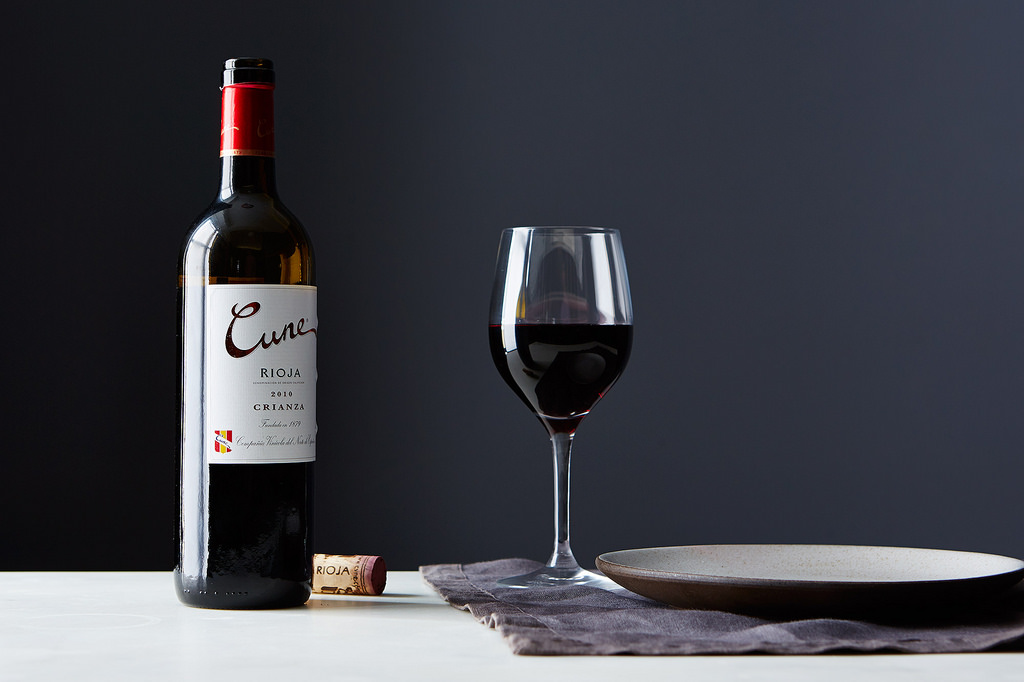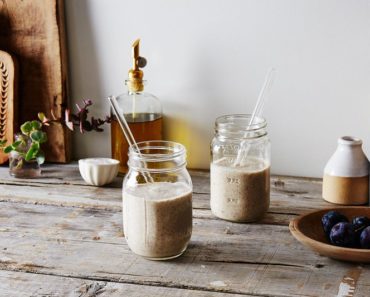We’re asking real people for the little things they do to stay sane and feel good amidst an overload of often confusing health-related information.
Today, we talk to Sarah Carey, Editorial Director of Food & Entertaining at Martha Stewart Living.
Compared to the pristine world of Instagram food, where every ingredient on a feast board has been manipulated, every mess has been staged, Sarah Carey’s page is like a cold shower. While she’s at work making the food at Martha taste and look its best, the photos she shares of her personal life are real—albeit curated—glimpses of what she cooks and bakes at home, often before she heads into the test kitchen.
“What was I doing? No one knew,” a recent caption read. How many times have I had this same thought halfway through a fridge-dive weeknight dinner?
“Everything that you see is an image that’s chosen by someone—how they want people to think about them,” Sarah explained to me when I asked her about the healthy-eating trends that can be impossible to escape on Instagram. “You may look at that and think, ‘That person’s eating beautiful salads everyday and is so much healthier than me’—but you don’t really know.”
In the spirit of realness, I caught up with Sarah over the phone to learn her tips for working nutritious meals into her jam-packed schedule, for eating enough greens when there are cookies on every counter of the test kitchen, and for keeping cool amidst the ever-turning wellness carousel.
Here’s what works for her:
1. Cook when you’re feeling freshest (even if it makes you untraditional).
For Sarah, that means she turns on the oven in the morning, before she leaves for work. It’s a routine she started when her kids were really little—she’d have to feed them by 5:30 p.m. or 6 p.m., which didn’t give her enough time to get home from work and start cooking. “I wanted to make sure they were eating the food that I made, so I started cooking in the morning.”
She’s continued the reverse schedule, even though her children now eat much later in the evening because mornings are still her most energetic time. “If I get home [at 7:30 p.m.] and cook, I think, ‘This. Sucks.’ Do I have any enjoyment out of it? I’m not relaxed; I’m just rushing to get it done. Even if I’ve had insomnia, I’m still more fresh in the morning than I am after cooking all day, working for nine hours.” (You can check out what Sarah makes as the sun rises by searching the hashtag #sarahbeforeseven.)
Leftovers rock! Thanks for the dough #marthabakes! Bacon, asparagus pizza! #sarahbeforeseven
A post shared by Sarah Carey (@sarahcarey1) on May 21, 2015 at 4:59am PDT
You’ll likely be happiest cooking when you have the most vigor!—not when it’s 9 p.m. and you’ve been running on empty for hours on end. If you value your snooze button, maybe that time is Saturday afternoon, Sunday evening, or even late at night, once you’ve already washed the dinner dishes.
And if you can’t make the meal beginning-to-end in the morning, you can still give it a head start:
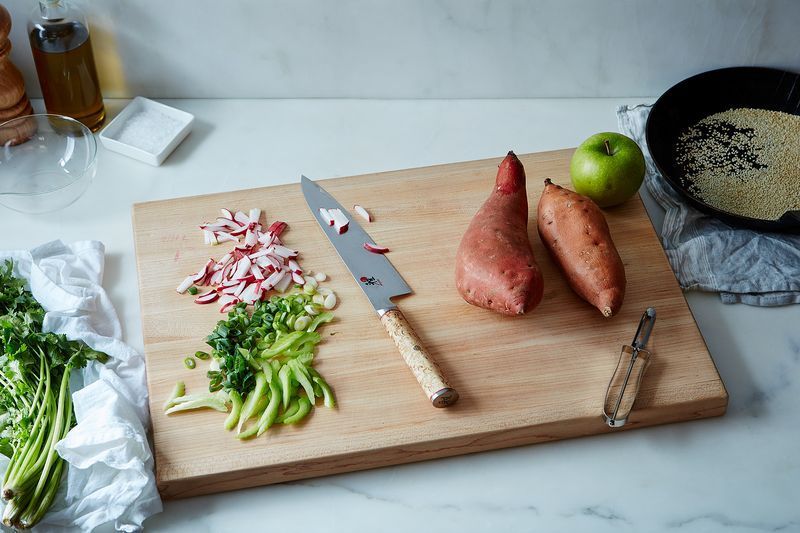
by Sarah Jampel
2. If you build it, they will come. If you keep fruits, vegetables, whole grains, and proteins on hand, you’ll be more likely to eat them.
Seems obvious, right? When potato chips and cookies are the foods in arm’s reach, potato chips and cookies are what you’ll eat. Sarah learned that simply by keeping more nutrient-dense options around the Martha Stewart test kitchen, the team could avoid sugar highs (and lows).
Sarah estimates that at least half of the food they’re testing and photographing at Martha at any given time is sweet—”it doesn’t seem like 50 percent of our magazine is sweets,” Sarah said, “but it seems like that is what’s around all the time.” To counter some of that sugar, the team will make a big protein-heavy salad, or another “healthy simple food,” like the savory porridge kitchari, so that they have savory, nutritious options to turn to when stomachs grumble.
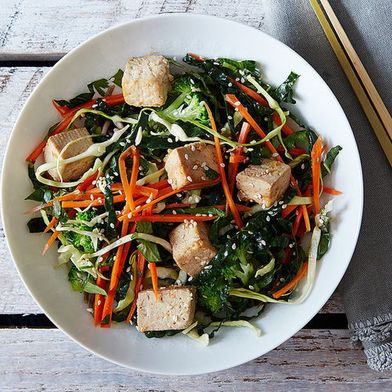
by Marian Bull
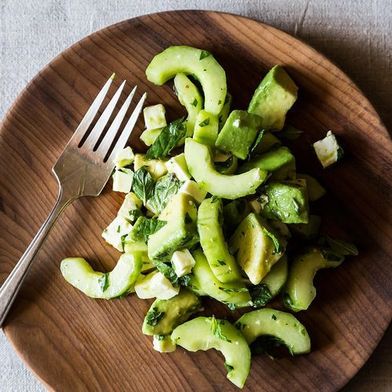
by Marian Bull
“Once [I] get that disgusting sugar feeling,” Sarah said, “the only thing that brings me back is eating something with protein. I’m not someone who thinks I need to eat way more protein, but it’s a way of balancing things out.”
3. Find a home-cooked self-care meal that soothes and revives you.
Search for that dish that fills you and lifts you—then riff on it endlessly. This past winter, all Sarah wanted to eat was pho. “I was obsessed with making it.” She’d make a pho-inspired soup with a fragrant, warming chicken broth, tons of fresh herbs, and any kind of noodles she wanted.
In the summer, Sarah treks to the farmers market, where she buys the fruits and vegetables that catch her eye and makes a composed salad with lots of stuff. “I eat it on the weekend and it makes me happy. It makes me feel like I’m taking care of myself, even when I don’t necessarily do that all week long.”
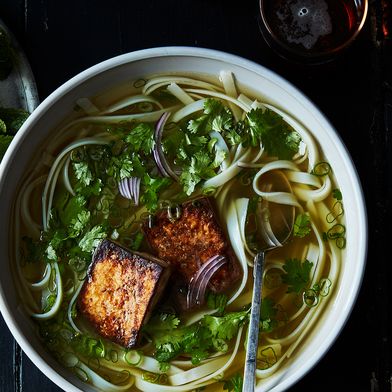
by Kristen Miglore
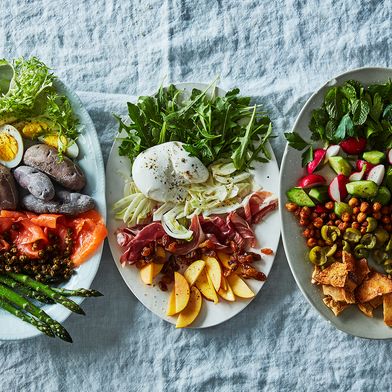
by Ali Slagle
4. Remember that wellness trends come and go.
It’s easy to get swept away in the health news of the hour. Apple cider vinegar this. Activated charcoal that. But it’s important to keep in mind that wellness trends of some kind have been around for what seems like ever. Sarah remembers the cabbage soup diet and, before that, the watermelon diet.
“We think these wellness trends are exploding, and they have taken on more traction because we’re surrounded by people telling us in so many different arenas—on social media, from celebrities. But [even though] it’s all expanded, it’s not different. It’s very cyclical.” Just check back in 10 years.
When the team at Martha Stewart is deciding what trends to feature in the magazine—should they publish Paleo recipes or cover unicorn food?—she asks herself whether the food will taste good. As Sarah put it, “Is it going to be something that I’d be proud if someone said to me, ‘I made your recipe’”?
“From a professional standpoint, Sarah told me, “we try to be as sort of holistic as possible when it comes to health content and sort of have a macro lens on health in general as opposed to focusing on trends as they come up. We [follow the] understanding that if you’re eating whole foods, if you’re generally drinking water or beverages that are not high in sugar, you’ll be healthier. If you eat lots of vegetables, you’ll be healthier.”

by Caroline Lange
by Marian Bull
5. Boxed options are not necessarily that much easier than cooking from scratch.
While Sarah’s goal at Martha is to help people “understand that cooking is easier than they think, and they don’t need to use those crutches” like ready-to-eat frozen entrées or canned soup. “You can make an easy mac and cheese on the stovetop in 20 minutes,” says Sarah. “Just because people are telling you the box is easier, doesn’t necessarily mean it is. And it’s certainly not as delicious. [At Martha], we’re interested in providing people simple ways to feed themselves without resorting to those things.”
When Sarah does turn to processed foods—she’s got a soft spot for Lipton Onion Dip Mix—she does so consciously: “I’m making a choice to consume it.”
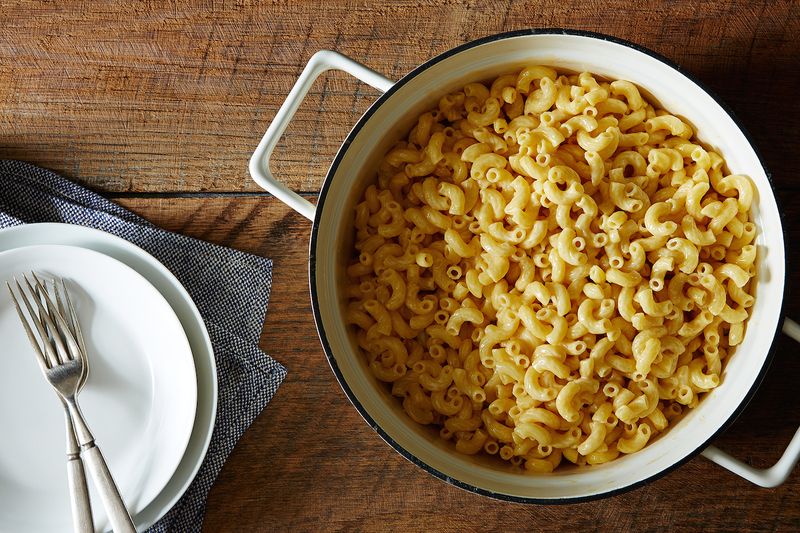
by mrslarkin
What are your tips for working nutritious meals into a busy schedule? Tell us in the comments below!
(via Food52)



